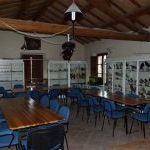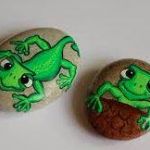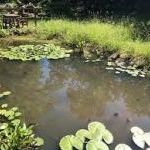Young Naturalists Project at Casa Archilei
The Young Naturalists Project aims to encourage young people to know more about the environment in all its aspects. It familiarises them with local geology, flora and fauna, and through group and teamwork promotes inclusion and involvement of disadvantaged or disabled young people.
Website
Useful links
Associazione Naturalistica Argonauta
The Field Studies Council in the UK provides opportunities for young people to study nature and the environment
Country
Media
* TOP TIP *
'Nature reserves are great places to learn about wildlife and the environment. They often have educational guides too!'
How is the project linked to climate change and sustainability?
Through the observation of native animal and plant species and the creation of natural habitats, children are encouraged to pursue some of the objectives of the 2030 Agenda. These include such as the protection of the environment and biodiversity and learn more about ecosystems and species.
Who is involved?
Middle school students (aged between 11 and 14) with places reserved for students with special emotional needs.
How are the participants involved?
The participants are involved in the following activities. They may be adapted and varied according to the interests of the children or special occasions that occur in the natural environment.
1. Laboratories: construction and use of artificial feeders and nesting boxes, with subsequent observation of the species that use them.
2. Excursions: to encourage a 360-degree observation of nature, through the use of all five senses. Pupils are given advice of the best clothing and the correct behaviour to observe wildlife in the natural environment. Materials such as binoculars, telescopes and cameras are introduced and the best observation techniques required. In this way the children will gradually learn to recognise animals and plants that can be found in the local area.
3. Nursery activity: the project involves the construction of a small nursery with the native plant species from area and the creation of personal 'herbariums' with botanical samples collected during the excursions.
4. Microfauna observation activities: Pupils will look for minibeasts including insects, spiders and invertebrates
Key steps:
The project works over 13 meetings during the course of the year. Here is the outline of the activities in each meeting - you may like to replicate them in your own school:
First meeting with the groups formed at the Casa Archilei education centre where the are team-building activities
Second meeting: visit to Lake Vicini with practical activities
Third meeting: preparation and construction of bird feeders
Fourth meeting: Developing the plant nursery activities
Fifth meeting: Construction of a 'hotel' for pollinating insects
Sixth meeting: Construction of bat boxes for roosting bats
Seventh meeting: Construction of nestboxes for birds
Eighth meeting: Visit to the Urbani Pond
Ninth meeting: 'Survival' activities at the Metauro river
Tenth meeting: Maintenance activities at Lake Vicini to look after the fish
Eleventh meeting: Visits to Metauro River and Lake Vicini
Twelfth meeting: camera traps, what they are, how they work and how they are made
Thirteenth meeting: King's Bay excursion and observation of the coastal environment
This process of familiarisation with the area, wildlife and habitats really helps the children appreciate the environment.




